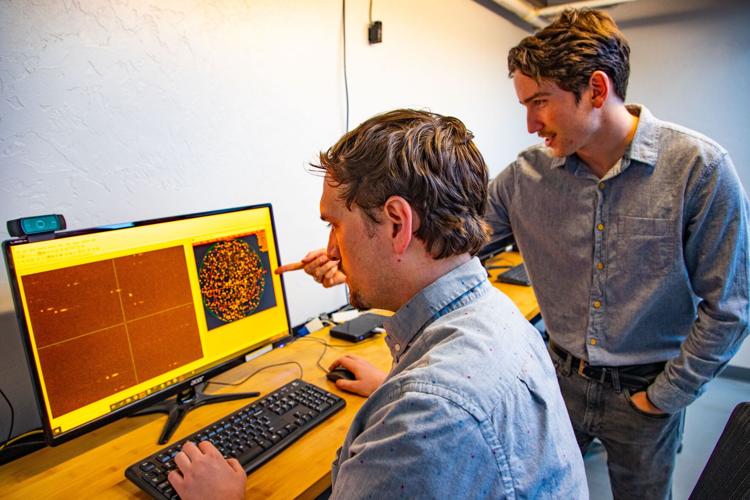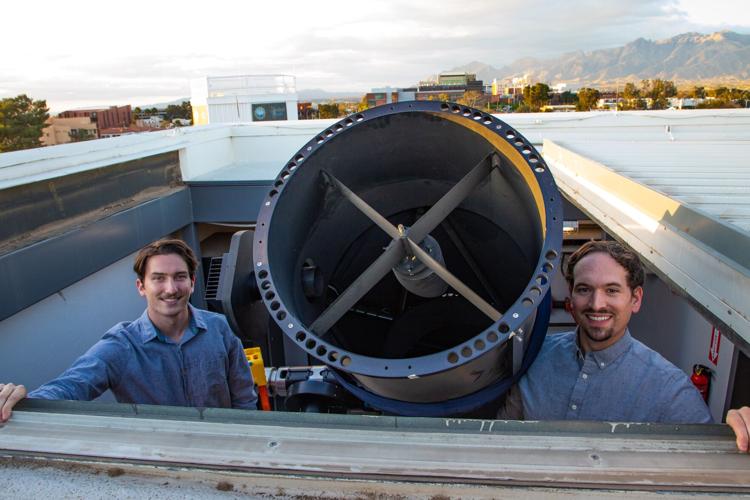An asteroid large enough to destroy a city whizzed harmlessly past Earth last week, and an international team led by researchers at the University of Arizona used the close call to practice for when our planet’s luck eventually runs out.
The dress rehearsal involved a worldwide network of astronomers and other experts that was activated to gather as much information as possible about the asteroid and walk through steps the international community would have to take to prepare for an impact and its aftermath.
UA professor Vishnu Reddy compared the March 25 exercise to a fire drill.
“You don’t start a fire for a fire drill. You go through the motions,” he said.
Reddy oversaw the global practice run in his role as campaign lead for the International Asteroid Warning Network, which was formed in 2013 at the recommendation of the United Nations. Two doctoral students with the UA’s Lunar and Planetary Laboratory, Adam Battle and David Cantillo, led the effort to characterize the space rock currently known as 2023 DZ2.

University of Arizona doctoral students David Cantillo, left, and Adam Battle pose with the RAPTORS telescope on Thursday.
The rehearsal had to be organized quickly.
The discovery of the near-Earth asteroid was announced on March 16 by the Minor Planet Center, a worldwide clearinghouse for asteroids and comets run by the International Astronomical Union. The space rock flew past just nine days later — 12:51 p.m. Tucson time on March 25 to be exact — at a range of about 109,000 miles, less than half the distance between the Earth and the moon.
“That’s super close,” said Reddy, who also helps the U.S. Air Force keep track of satellites and space junk.
Such a near miss by an object this large happens maybe once every five to 10 years, he said.
Asteroid 2023 DZ2 was first spotted on Feb. 27. Early orbital calculations showed a good chance of a collision with Earth three years from now, but subsequent observations have all but ruled that out for the foreseeable future. According to UA astronomers, the probability of an impact in 2026 has dropped from about 1 in 430 just two weeks ago to about 1 in 71,000.
During the asteroid’s close encounter with Earth last week, Battle and Cantillo were able to determine its approximate size, composition and spin rate using remote observations from NASA’s Infrared Telescope Facility on Mauna Kea in Hawaii and direct observations from the RAPTORS telescope, designed and built by UA undergraduate students under Reddy’s mentorship.

University of Arizona doctoral students Adam Battle, left, and David Cantillo scan images on Thursday taken with the RAPTORS telescope on the UA campus of asteroid 2023 DZ2 as it made a close flyby of the Earth on March 25.
They identified 2023 DZ2 as a rare type of asteroid that is stony instead of metallic and made from an almost-white material known as aubrite. It’s “spinning really fast,” Reddy said, completing a rotation every six minutes or so. That suggests the object is solid like a boulder, rather than a so-called “debris pile” that would fly apart at that speed.
The space rock is roughly 100 feet in diameter, making it almost as big as the one that created Meteor Crater west of Winslow roughly 50,000 years ago.
It would take a much larger asteroid than that to cause what’s terrifyingly known as “an extinction-level event” on Earth, but if something this size crashed down on a populated area it would make for “a really bad day,” Reddy said.
Roughly 70% of the planet is covered in water, so rocks from space are far more likely to “plop into the ocean” than land on a city, he said, but even a water impact could result in potentially deadly tsunamis.
The good news, according to Reddy: Astronomers should be able to calculate the approximate point of impact from an inbound threat fairly soon after it is discovered, giving people sufficient time to escape the blast zone and prepare for what might come next.
“It’s not just a problem for the United States,” he said, which is why rehearsals like the one last week — and organizations like the International Asteroid Warning Network — are so important.
In the end, the practice drill included over 80 people from more than a dozen countries, including current U.S. adversaries Russia and China. Reddy was encouraged by the display of international cooperation.
“It’s remarkable that when faced with a global threat, all our earthly problems seem to disappear,” he said.
In 2022, NASA tested humanity’s ability to knock an asteroid off-course as part of the DART mission. And it didn’t go quite as expected.









